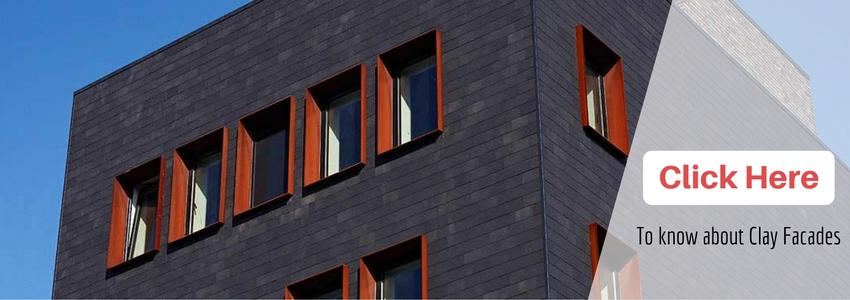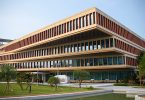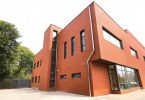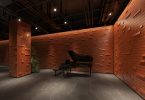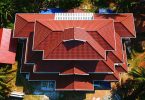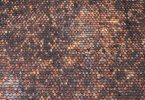A building façade refers to one side, normally the front side of a building structure. It is one of the most integral pieces to the overall design of the structure, as it adds a unique personality and character to it. A building façade can be of several shapes and sizes, in fact, it is one of those pieces of the structure that provides the architect with the chance to experiment and showcase their talent and bring their creations to life.
Every now and then, people associate façade with older buildings or the ones which are prestigious, but today every building can create a recognisable façade. In addition to that, people even link a façade with something that only adds to the aesthetic factor of a building structure. But that’s not all it does! Yes, the importance of a façade in architecture is much more than that. Owing to this, we at Wienerberger would love to reveal the real importance of building façade. Read On!!!
The Importance Of Building Facade in Architecture

Facades are the face of a building and this part of the building envelope serves several purposes. Let’s discuss the most prominent ones:
Sakaidechō 1. Adds Personality & Character
Ok, this had to be number one. A building façade is an opportunity to put the emphasis on design. There is ‘n’ number of buildings that settle for standard designs and perfectly meet the structural regulations but always lack their identity, character, and personality. A Façade can play a huge role in this as it imparts that uniqueness to the structure which negates the detrimental effect of the building which lacks that something special.
buy ivermectin europe 2. Plays A Pivotal Role In Energy Efficiency
In addition to being aesthetically pleasing, a façade plays a pivotal role in energy efficiency and linking the exterior to the interiors of the building. Façade can help in significantly reducing the energy bills. You may think how, well, a façade minimizes solar gain, which in turn, reduces the cooling loads of the building which at the end results in minimal energy bills.
3. Shield Against Natural Elements
A Façade protects the occupants from wind and rain and the extremes of temperature and humidity. Façades are incredibly popular for its resistance to temperature, weathering, and corrosion, which over many decades is a valuable characteristic.
4. Ensures Natural Ventilation
A façade essentially is the external skin of the building. And the protection provided by the external skin, confirms natural ventilation. This is achieved through various means, like design aspects, cavity skins, and mechanized windows. Also, a façade ensures the occupant’s comfort isn’t compromised during harsh climatic conditions like wind, rain, and snow.
5. Provides Acoustic Insulation
A well-designed façade external skin provides a high degree of acoustical comfort to its occupants as compared to a conventional building façade. Acoustic comfort in no ways compromises the required ventilation, air exchange and visual connection with the exterior.
6. Offers Comfort And Adds Productivity
A successfully designed building façade system empowers the occupants to regulate light penetration by several methods, like louvers or shading devices. In addition to this, it also allows the regulation of air movement and temperature with operable windows, which increases the overall buildings comfort levels. When comfort levels peak, better work productivity is pretty evident.
7. Provides Extra Security
A good façade system provides a comparatively unobtrusive method of attaining building security by right planning and treating the building openings as opposed to the conventional system of grills and bars.
8. Adds Life To The Structure
Facades are the outcome of sophisticated technology and advanced manufacturing processes which means they are highly resistant to the exterior environment. When compared to the commonly used exterior paints these can look smudgy, attract dirt and dust, facades, are sturdy and weather resistant, these powers make them highly durable hence they last for decades. In addition to that with new innovations in materials, ideas, and design, a building façade is continuing to unlock several opportunities for buildings.
Choosing The Right Building Façade
Getting façade construction right is extremely important as they can considerably affect the structures lighting, heating, and ventilation. While there are many factors which require consideration in building façade, one of the most daunting one is – Choosing The Right Material. Also, your decision on the right façade material needs to be made after considering a range of factors like:
- Water-Resistance
- Energy Efficiency
- Aesthetics & Texture
- Versatility
- Eco-Friendly
- Durability
- Cost
Read about the Different Types Of Building Façade & Its Pros And Cons.
Clay Façade – The Magical Façade Material
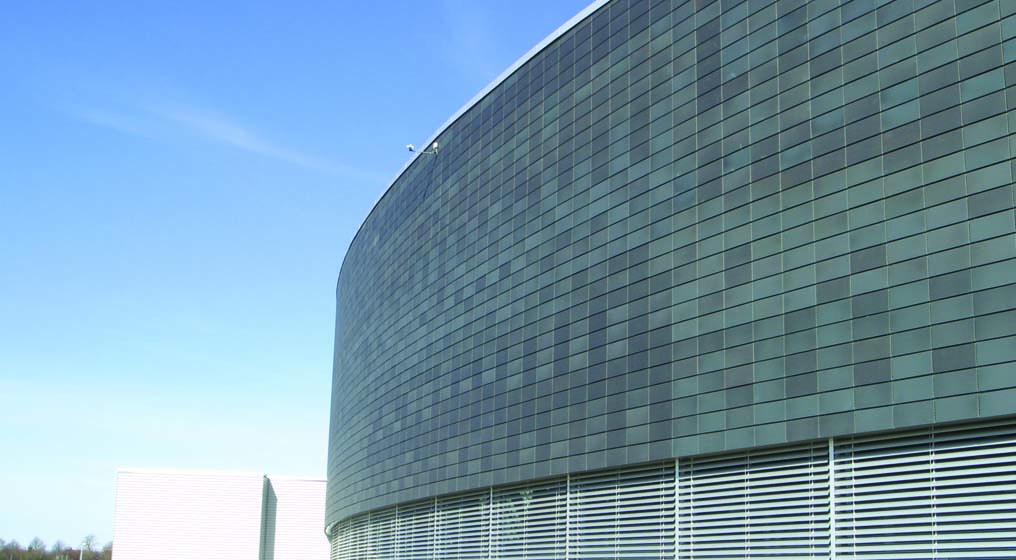
Clay facades are nothing but the panels made of terracotta that can be cladded on the exterior walls or facade of any building. These are environmentally friendly and tough modern facade which enhance the value and the design aspect of the building structure. Clay façades are not only beautiful to look at but also have many advantages over the other facade materials, here is a quick snapshot:
- Durability – Terracotta tiles used for exterior walls are tested for high strength and safety and hence are the apt material that can be used for exterior walls of homes, offices and even public buildings. Their weather resistance power makes them highly durable which last for decades.
- Long Lasting Appeal – They are the outcome of sophisticated technology and advanced firing processes, hence, are highly resistant to the exterior environment. Clay facades can retain their colour for a longer period of time and since they are made of terracotta, they do not have any calcium leakages nor efflorescence effect.
- Sustainable – These are made of natural resources like clay, hence are the best fit for building sustainable buildings.
- Provide Insulation – Clay is a natural thermal insulator and along with that, a combined benefit of ventilated façade increases the insulation further. Clay facades help to keep the heat away from entering inside the building and help to maintain a comfortable indoor climate naturally.
- Maintenance Free – Once installed, these are very easy on maintenance. They can easily prevent rattling of the panels, and their indigenous system provided for rainwater drainage helps in preventing soiling, which results in low maintenance.
- Easy Fixing – Very easy to fix as there is no use of sealants or rout. In addition to that, it also helps in overcoming uneven surfaces and appearance of cracks on the walls.
- Fireproof – This is one of the major benefits of using clay facades as these are fired at exceptionally high temperatures which make them fire resistant.
- Aesthetic Appeal – Clay facades provide a contemporary look to the building, they come in a variety of colours to suit the overall design concept of the building.
Clay façade are becoming the first choice of modern architects who want to leave their environment-friendly thumbprint in the world.
Final Thoughts
A caringly designed facade can make a building work more efficiently for the owners, occupants, and environment. In addition to that, it has the power to totally transforming the performance of an existing building. Façade is an interface between the interior space and exterior environment, as a building skin, it plays a crucial role in heat, light, and air exchange. However, its performance depends on choosing the right material and getting it correctly installed. To get façade installation right Get In Touch with us.
Authored by a building expert from Wienerberger India
For any kind of assistance or tips on green building materials – drop us a word at gosmartbricks@gmail.com



